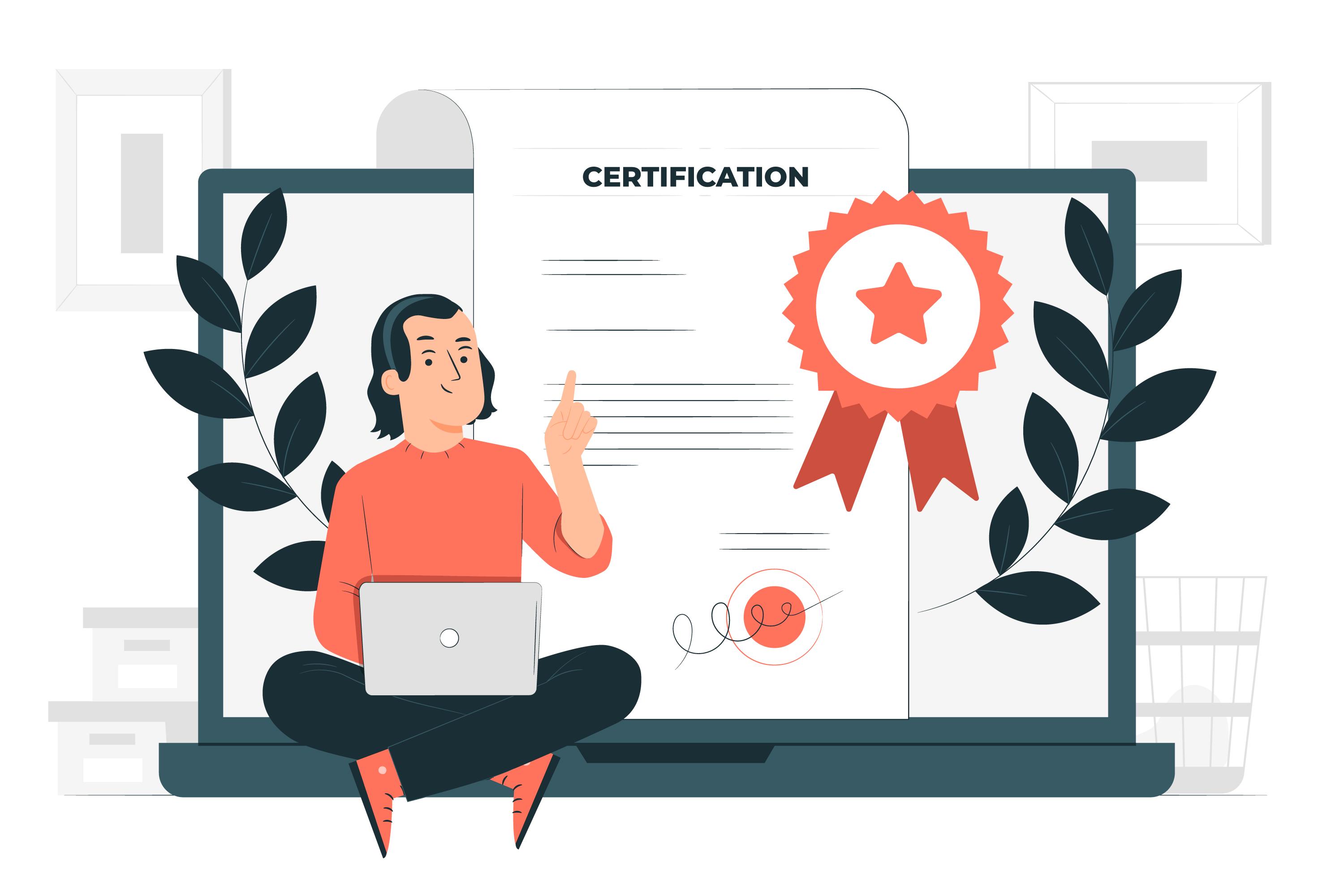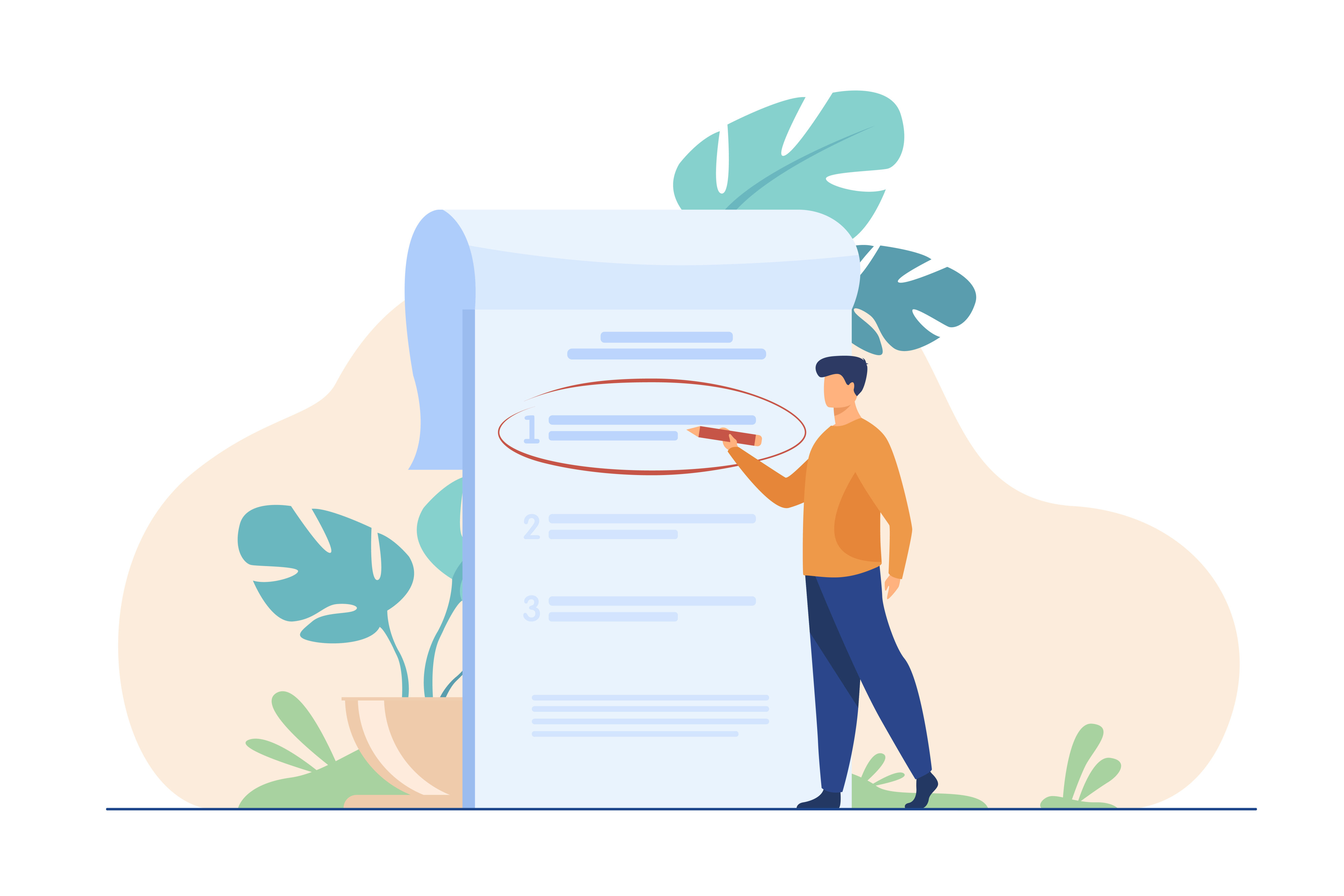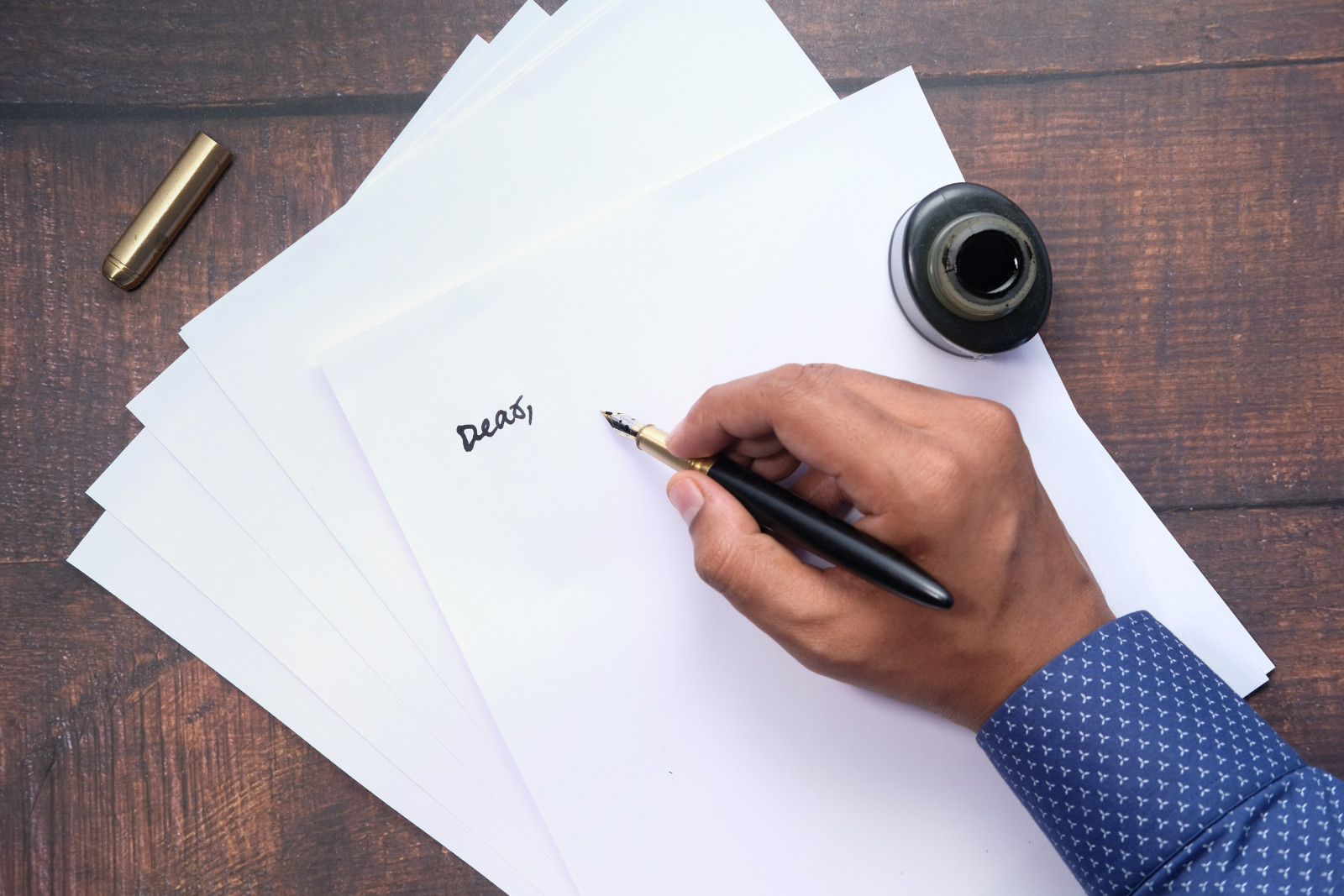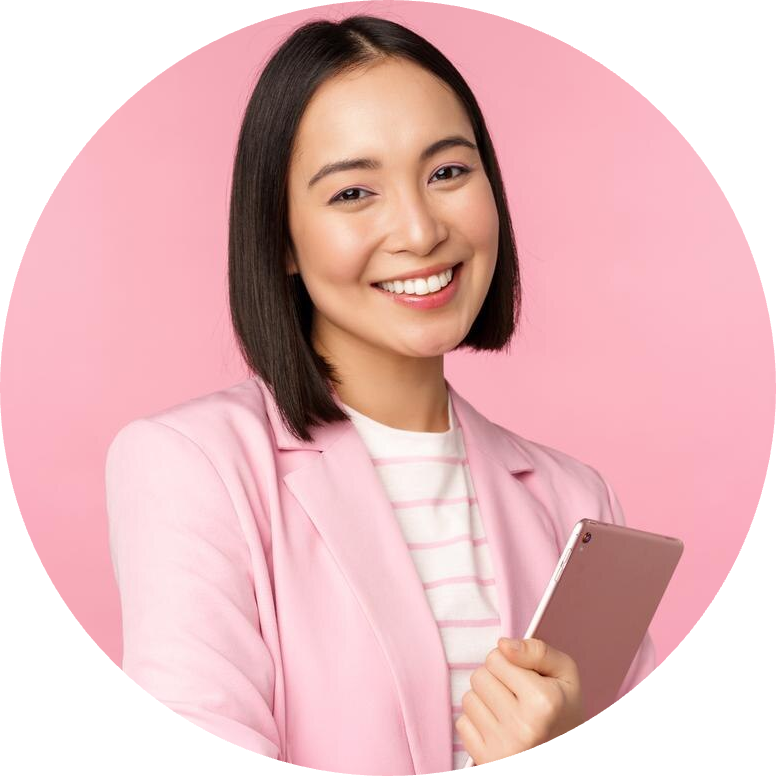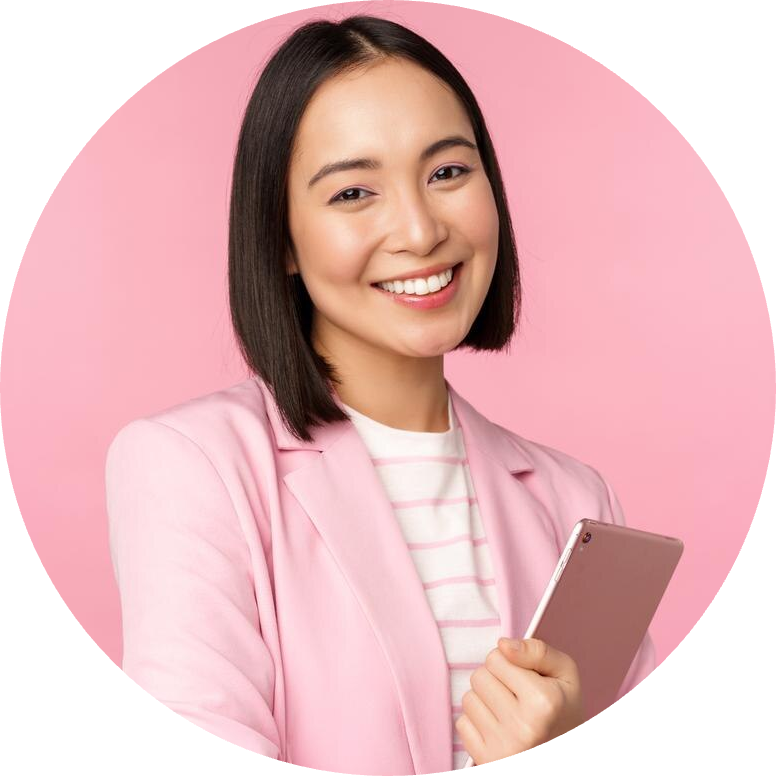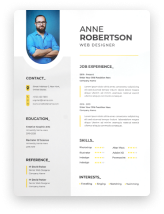Embarking on a journey to create the perfect UX Designer resume? Dive into this article for expert advice on structure, content, and presentation.
Introduction to the Role of a UX Designer
In an ever-evolving digital world, the role of a UX Designer has become more crucial than ever. UX Designers are the architects of user experience, crafting interfaces that are not only aesthetically pleasing but also intuitive and user-friendly. As a UX Designer, your resume needs to reflect your understanding of user-centric design principles, technical proficiency, and creative problem-solving skills. This guide will walk you through the essential elements of a winning UX Designer resume, tailored to the demands and expectations of the 2024 job market. We'll cover everything from formatting and structure to highlighting your unique skills and experiences, ensuring your resume not only catches the eye of potential employers but also effectively communicates your professional value.
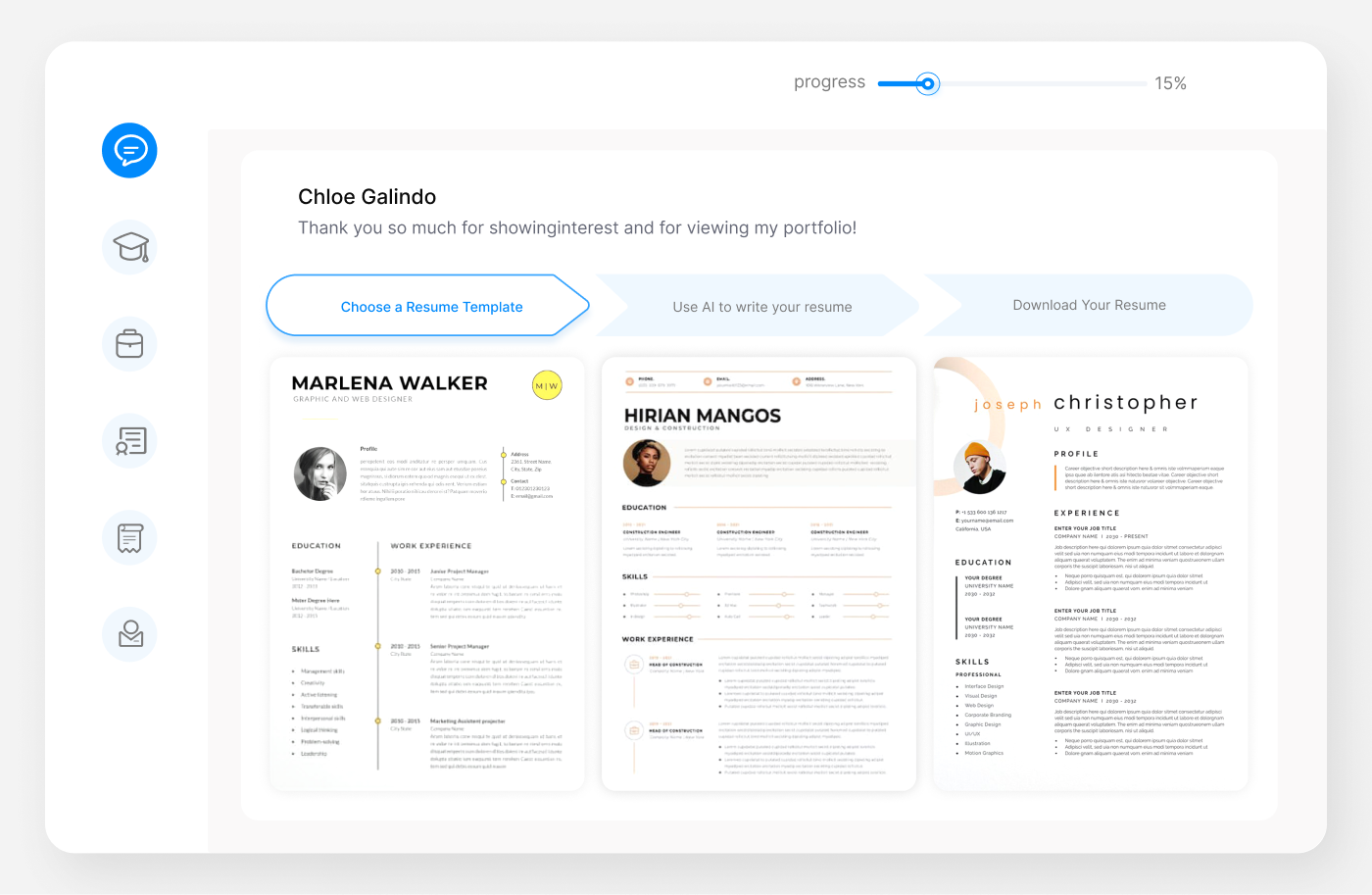
UX Designer Resume Example
Sophia Martinez
987 Design Drive, Tech Valley, CA 94103
(555) 321-6543 | sophia.martinez@example.com
Professional Summary
Innovative and user-centric UX Designer with over 6 years of experience in designing intuitive and engaging user interfaces for mobile apps and websites. Proficient in user research, prototyping, and usability testing. Adept at collaborating with cross-functional teams to create user-friendly designs that enhance user experience and drive business goals.
Work Experience
Senior UX Designer
Digital Solutions Inc., San Francisco, CA
May 2018 - Present
- Led UX design projects for high-profile clients, enhancing user satisfaction and engagement.
- Conducted user research and usability testing to gather insights and inform design decisions.
- Collaborated with UI designers and developers to create seamless and visually appealing designs.
- Presented design concepts and prototypes to stakeholders, ensuring alignment with business objectives.
UX Designer
Creative Tech Studio, Palo Alto, CA
June 2014 - April 2018
- Designed user-friendly interfaces for mobile apps and websites, resulting in a 30% increase in user retention.
- Developed wireframes, user flows, and interactive prototypes.
- Worked closely with product managers to incorporate user feedback into design enhancements.
- Assisted in the creation of design guidelines and documentation.
Education
Bachelor of Science in Graphic Design
California College of the Arts, San Francisco, CA
Graduated: May 2014
GPA: 3.6
Skills
- User Research & Personas
- Wireframing & Prototyping (Sketch, Adobe XD, Figma)
- Usability Testing & Analysis
- Responsive Web Design
- Collaboration & Communication
- Understanding of Front-End Development
Projects
- Redesign of "ShopEasy" Mobile App (Increased user engagement by 40%)
- Website UX Design for "GreenEarth" Nonprofit (Awarded Best Nonprofit Website Design 2022)
Resume Format or Structure for UX Designers
When crafting a UX Designer resume, the structure and format play a pivotal role. Your resume should not only convey your skills and experience but also showcase your design sensibility. Here are some format options:
-
Chronological Resume: This format lists your work experience in reverse chronological order. It's ideal if you have a solid work history and your recent roles are relevant to the UX Design field.
-
Functional Resume: This format focuses on your skills and achievements rather than a chronological work history. It's suitable for those with gaps in their employment or who are transitioning from a different field.
-
Combination Resume: As the name suggests, this format blends the chronological and functional styles. It allows you to highlight your skills upfront, followed by your work history.
-
Targeted Resume: Tailored specifically for the UX Design role you're applying for. This format requires more work but can be highly effective.
Regardless of the format you choose, ensure that your resume is clean, professional, and easy to navigate. Use clear headings, bullet points, and a balance of white space and text to make your resume aesthetically pleasing and readable.
Crafting a Compelling Resume Summary or Objective for UX Designers
A resume summary or objective is a brief statement at the top of your resume that outlines your professional goals and highlights your most relevant skills and experiences. For a UX Designer, this section is crucial as it sets the tone for the rest of your resume and can capture the hiring manager's attention.
Resume Summary for Experienced UX Designers
If you have significant experience in UX design, a resume summary is your best option. It should succinctly highlight your years of experience, key achievements, and specific skills that align with the job you're applying for.
Example of a UX Designer Resume Summary:
"Detail-oriented UX Designer with over 5 years of experience in creating user-centric web and mobile applications. Proven track record in improving user experience through innovative design solutions and data-driven approach. Skilled in user research, prototyping, and collaborating with cross-functional teams to deliver impactful user experiences."
Resume Objective for Entry-Level UX Designers
For those new to the field or making a career change, a resume objective is more suitable. This should focus on your career goals, relevant skills, and how you can contribute to the company.
Example of a UX Designer Resume Objective
"Aspiring UX Designer with a strong foundation in user-centered design principles and a passion for creating intuitive digital experiences. Seeking to leverage my design skills and knowledge in user research to contribute to innovative projects at [Company Name]."
Highlighting Work Experience for UX Designers
The Work Experience section is a critical part of your resume. It's where you demonstrate your professional journey, achievements, and how you've applied your UX design skills in various roles. Here's how to effectively present your work experience:
Structuring Your Work Experience
-
Start with your most recent job: List your roles in reverse chronological order, starting with the most recent.
-
Include job title, company name, and dates: Clearly state your position, the name of your employer, and the period you worked there.
-
Use bullet points for clarity: Break down your responsibilities and achievements into bullet points for easy reading.
-
Quantify your achievements: Where possible, use numbers to quantify your impact, such as 'Increased user engagement by 30% through a redesigned user interface.'
What to Include in Each Role
-
Responsibilities: Include your day-to-day tasks and how they contributed to the bigger picture.
-
Projects: Highlight specific projects you worked on, particularly those where you made a significant impact.
-
Skills and Tools: Mention the skills and tools you used, such as user research methods, prototyping tools, or collaboration with other teams.
Example of Work Experience for a UX Designer:
Senior UX Designer, Doodle Tech Solutions
May 2019 - Present
-
Led the UX design of a flagship product, resulting in a 40% increase in user retention.
-
Conducted user research and usability testing to inform design decisions, reducing user complaints by 25%.
-
Collaborated with product managers and developers to ensure a seamless user experience across all digital platforms.
-
Utilized tools like Sketch, Adobe XD, and Figma for creating high-fidelity prototypes and wireframes.
Detailing Education in a UX Designer Resume
Your education section is an essential part of your resume, especially if you have formal training in UX design or related fields. Here's how to effectively present your educational background:
Formatting Your Education Section
-
List your highest degree first: Start with your most advanced degree and work backward from there.
-
Include the degree title, institution, and graduation date: Clearly state your degree (e.g., Bachelor of Science in UX Design), the name of the institution, and your year of graduation.
-
Mention relevant coursework or projects: If you have coursework or projects directly related to UX design, consider including them to showcase your relevant educational background.
What to Include for New Graduates
If you're a recent graduate, your education section will be more detailed. Include:
-
GPA (if above 3.5): A high GPA can be a selling point.
-
Honors or awards: Mention any academic achievements or scholarships.
-
Relevant extracurricular activities: Include any clubs or organizations, especially those related to design or technology.
Example of Education Section for a UX Designer Resume:
Bachelor of Science in User Experience Design
Boston University, 2020
-
Graduated Cum Laude with a GPA of 3.8.
-
Relevant Coursework: Human-Computer Interaction, Digital Design Principles, User Research Methods.
-
Capstone Project: Developed a prototype for an educational app aimed at improving online learning experiences for high school students.
Highlighting Skills on a UX Designer Resume
The skills section of your UX Designer resume is where you get to showcase the abilities that make you a great fit for the role. It's crucial to balance both technical and soft skills to present yourself as a well-rounded candidate.
Technical Skills
These are the hard skills that are essential for UX design. Include:
-
Design Tools: Mention proficiency in tools like Sketch, Adobe XD, Figma, or InVision.
-
Prototyping: Highlight your ability to create interactive prototypes.
-
User Research: Showcase skills in user testing, surveys, and other research methods.
-
Wireframing: Include your experience in creating wireframes for various platforms.
-
Knowledge of Coding: While not always necessary, understanding HTML, CSS, or JavaScript can be a plus.
Soft Skills
Soft skills are equally important in UX design. They include:
-
Problem-Solving: Your ability to identify design problems and devise effective solutions.
-
Communication: Essential for collaborating with team members and stakeholders.
-
User Empathy: Understanding and anticipating user needs.
-
Creativity: The ability to think outside the box and bring innovative ideas to the table.
-
Adaptability: Being flexible and able to adjust to new challenges and technologies.
Skills Section Example
Technical Skills:
-
Proficient in Adobe XD, Sketch, and Figma
-
Experienced in wireframing and prototyping
-
User research and usability testing
-
Basic knowledge of HTML, CSS
Soft Skills:
-
Strong problem-solving and analytical skills
-
Excellent communication and teamwork abilities
-
Deep empathy for user needs and behaviors
-
Creative thinking and innovative design approach
-
Adaptable to new tools and technologies
Additional Sections for Enhancing a UX Designer Resume
Beyond the standard sections, your UX Designer resume can benefit from additional categories that showcase your broader skill set and achievements. Here's what you can include:
Certifications
If you have certifications relevant to UX design, they can significantly bolster your resume. Examples include:
-
UX Design Certification from an accredited institution.
-
Certificates from online courses in areas like interaction design or user research.
Awards and Achievements
Any industry-related awards or recognitions you've received can be a great addition. Examples might be:
-
Design competition awards.
-
Recognition or awards from previous employment.
Volunteer Experience
If you have volunteer experience, especially in roles related to design or technology, it's worth mentioning. This demonstrates your passion and commitment to the field.
Personal Projects
Highlighting personal or freelance projects can showcase your initiative and real-world experience. Include:
-
Personal design projects.
-
Contributions to open-source projects.
Publications
If you've written articles or papers on UX design or related fields, list them. This can position you as a thought leader in the industry.
Example of Additional Sections
Certifications:
- Certified User Experience Designer, UX Design Institute, 2022
Volunteer Experience:
- Volunteer Web Designer, Local Non-Profit Organization, 2021-Present
Personal Projects:
- Developed a mobile app prototype for a local community event, enhancing user engagement.
Writing an Effective Cover Letter for a UX Designer
A cover letter is your opportunity to tell a compelling story about your career and express your passion for UX design. It complements your resume by providing a more personal insight into your professional experiences and aspirations.
Structure of a UX Designer Cover Letter
-
Introduction: Start with a strong opening that grabs attention. Mention the position you're applying for and how you heard about it.
-
Body: In one or two paragraphs, highlight your relevant experiences and achievements. Explain why you're a good fit for the role and the company.
-
Conclusion: End with a call to action, such as expressing your eagerness to discuss your qualifications in an interview.
Tips for Writing Your Cover Letter
-
Tailor it to the job and company: Show that you've done your research and understand what the company is looking for.
-
Showcase your design philosophy: Talk about your approach to UX design and how it aligns with the company's values or projects.
-
Be concise and to the point: Keep your cover letter to one page.
Cover Letter Example
Dear [Hiring Manager's Name],
I am writing to express my interest in the UX Designer position at [Company Name], as advertised on [Where You Found the Job Posting]. With over five years of experience in creating user-centric designs and a deep passion for innovative user experience, I am excited about the opportunity to contribute to [Company Name]'s projects.
In my current role at [Your Current Company], I led the design of a major product overhaul that resulted in a 30% increase in user engagement. My approach always involves deep user research, collaborative ideation, and iterative testing to ensure the end product not only meets but exceeds user expectations. I am particularly drawn to [Company Name] because of your commitment to [Something Notable About the Company or Its Projects].
I am eager to bring my expertise in UX design and my collaborative spirit to [Company Name]. Thank you for considering my application. I look forward to the opportunity to discuss how I can contribute to your team's success.
Sincerely, [Your Name]
Further Sections and Final Thoughts on Crafting a UX Designer Resume
As you finalize your UX Designer resume, here are some additional considerations and concluding advice to ensure your application stands out:
Portfolio Link
- Include a link to your online portfolio: Your portfolio is a visual testament to your skills and creativity. Make sure it's easily accessible in your resume.
Customization and Updating
-
Tailor your resume for each application: Customize your resume to align with the specific requirements of each job you apply for.
-
Keep your resume updated: Regularly update your resume to reflect new skills, projects, and experiences.
Final Review
-
Proofread thoroughly: Ensure your resume is free from typos and grammatical errors. These can be a red flag for employers, especially in a detail-oriented field like UX design.
-
Get feedback: Have a mentor, peer, or professional review your resume for feedback.
Final Thoughts
Creating a resume as a UX Designer is about more than listing your experiences and skills; it's about crafting a user experience in itself. Your resume should be a reflection of your approach to design -- thoughtful, user-centric, and aesthetically pleasing. By following the guidelines and tips provided in this article, you'll be well on your way to securing your next opportunity in the exciting field of UX design.
Key Takeaways for Crafting a UX Designer Resume
As you embark on creating or updating your resume for a UX Designer position in 2024, here are the key points to keep in mind:
-
Format and Structure: Choose a resume format that best showcases your experience and skills. Whether it's chronological, functional, combination, or targeted, ensure it's clean and user-friendly.
-
Compelling Summary/Objective: Write a succinct summary or objective that highlights your expertise and what you can bring to the role.
-
Relevant Work Experience: Focus on work experiences that demonstrate your skills in UX design. Use bullet points to describe your roles, responsibilities, and achievements, quantifying them where possible.
-
Education and Training: List your educational background, emphasizing any degrees or courses relevant to UX design.
-
Showcase Skills: Balance technical skills like proficiency in design tools with soft skills such as communication and problem-solving.
-
Additional Sections: Include certifications, awards, volunteer work, personal projects, or publications to provide a more comprehensive picture of your capabilities and interests.
-
Effective Cover Letter: Accompany your resume with a well-crafted cover letter that tells your professional story and shows your enthusiasm for the role.
-
Portfolio Link: Don't forget to include a link to your online portfolio, showcasing your best work.
-
Customization and Updating: Tailor your resume for each job application and keep it updated with your latest experiences and skills.
-
Proofreading and Feedback: Finally, proofread your resume and cover letter for errors and seek feedback from peers or mentors.
By adhering to these key points, your UX Designer resume will not only stand out but also provide a clear and concise narrative of your professional journey, skills, and what you can contribute to a potential employer in the field of UX design.
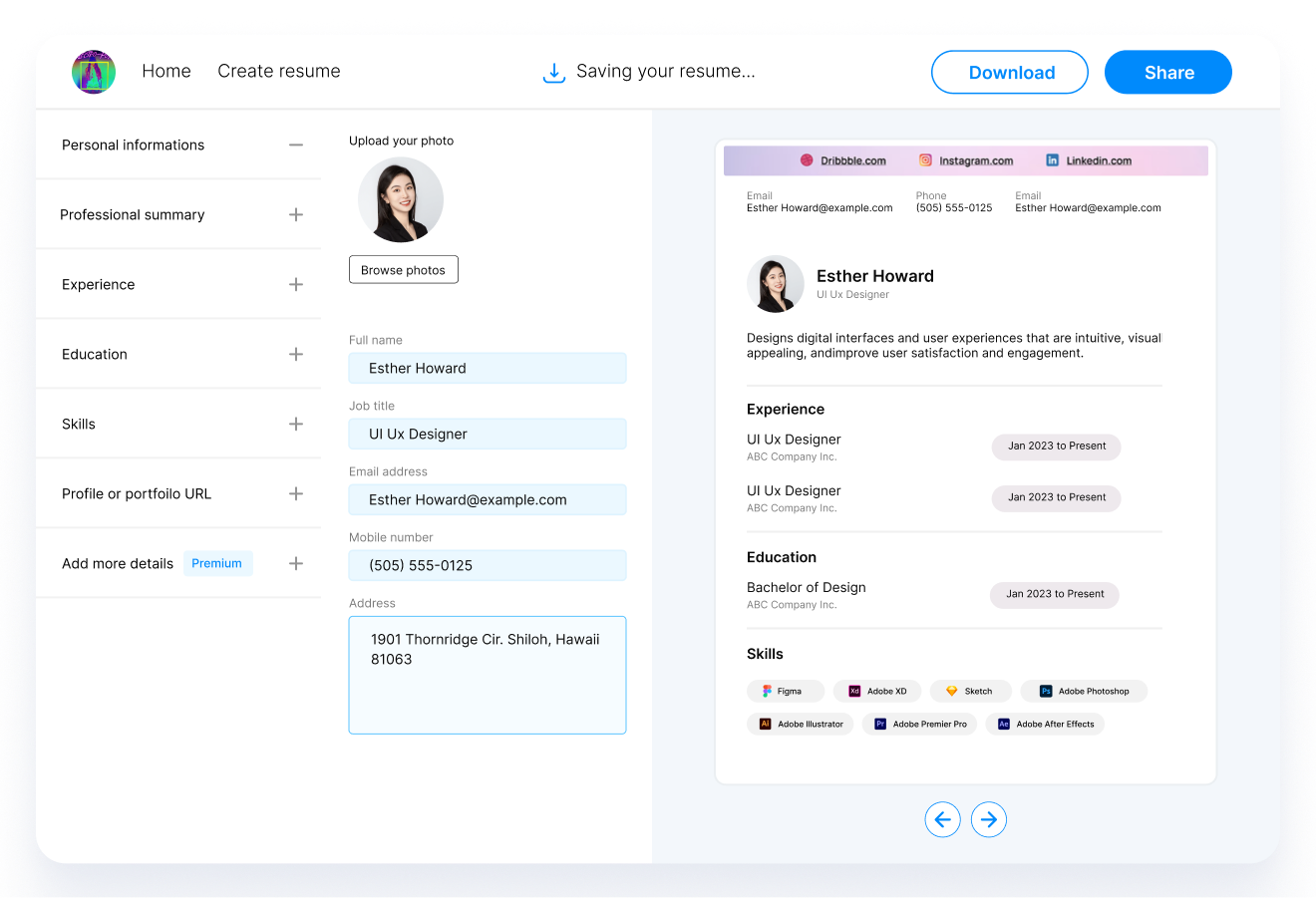
FAQ about Crafting a UX Designer Resume
In this final section, let's address some common questions related to crafting a resume and cover letter for a UX Designer position:
Q1: How long should my UX Designer resume be?
A1: Ideally, your resume should be one page long, especially if you have less than 10 years of experience. If you have a more extensive career, a two-page resume is acceptable, but ensure it's concise and relevant.
Q2: Should I include a photo on my resume?
A2: It's generally not recommended to include a photo on your resume, especially in UX Design. Focus on your skills and experiences.
Q3: How can I make my resume stand out?
A3: Customize your resume for each job application, ensuring it includes keywords from the job description. Also, a clean design and a well-organized layout can make your resume more attractive.
Q4: Is a cover letter really necessary?
A4: Yes, a cover letter is crucial as it allows you to explain your experiences and interest in the role more personally and directly. It's an opportunity to make a strong first impression.
Q5: How important is it to have an online portfolio?
A5: Having an online portfolio is extremely important for a UX Designer. It allows employers to see your work and get a sense of your design style and capabilities.
Q6: Can I include freelance or personal projects on my resume?
A6: Absolutely. Freelance and personal projects can be just as valuable as formal work experience, especially if they demonstrate relevant skills and creativity.
Q7: How often should I update my resume?
A7: You should update your resume regularly, ideally every time you complete a significant project, learn a new skill, or achieve a professional milestone.
Q8: What if I don't have much work experience in UX Design?
A8: Focus on transferable skills from other roles, relevant educational projects, or personal projects that demonstrate your UX design abilities.
Remember, a well-crafted resume and cover letter are your first steps in the journey to landing your ideal UX Designer role. Tailor your application to reflect your unique skills and experiences, and always keep the user - in this case, the hiring manager - in mind.
Recommended Reading


